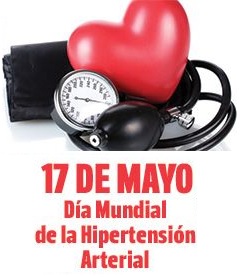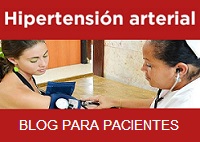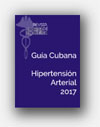 Managing kidney disease with blood-pressure control
Managing kidney disease with blood-pressure control
Por: Elke Wühl and Franz Schaefer. Nat. Rev. Nephrol. 7, 434–444 (2011).
The progression of chronic kidney disease (CKD) is largely independent of the underlying kidney disorder once renal function has fallen below a critical level. Hypertension is an independent risk factor for disease progression in both adult and pediatric patients with kidney disorders. Increasing evidence from clinical trials indicates that the rate of CKD progression can be lowered by pharmacological interventions. Nephroprotective strategies currently focus on the blockade of the renin–angiotensin system.
Por: Gutiérrez-Misis, Aliciaa, Sánchez-Santos, Maria T., Banegas, Jose R., Zunzunegui, Maria V., Castell, Maria V. y Otero, Angela.
To estimate the prevalence and incidence of hypertension in a Spanish cohort of people aged at least 65 years with 13 years’ follow-up. This is the first study to provide age-adjusted and sex-adjusted incidence rates of hypertension in a Mediterranean-based population aged 65 years or older.
Population-based longitudinal study set in the city of Leganes, Spain. The cross-sectional prevalence of hypertension was estimated using data available for the 1993, 1995, 1999, and 2006 cohorts. The incidence density (incident cases of hypertension/person-years) was calculated for 522 individuals without hypertension at baseline. Individuals were classified as hypertensive if they were taking physician-prescribed medication for hypertension or if their blood pressure was equal to or greater than 140/90 mmHg.
Hypertension prevalence increased progressively with time, from 53.5% in 1993 to 86.2% in 2006. In all four waves, women had a higher prevalence of hypertension than men (P < 0.05). The total incidence density of hypertension was 7.6 [95% confidence interval (CI) 6.6–8.7] cases per 100 person-years of follow-up: 9.0 (95% CI 7.2–11.2) in women and 6.9 (95% CI 5.8–8.3) in men. In all age groups, the incidence density was nonsignificantly higher in women than in men (P > 0.05).
Both the incidence and prevalence of hypertension in this population of people aged at least 65 years were high, and the prevalence increased dramatically over time, especially among women.
Fuente: Journal of Hypertension: October 2011 – Volume 29 – Issue 10 – p: 1863–1870.
Síndrome de Piernas Inquietas e hipertensión en mujeres de mediana edad
Por: Salma Batool-Anwar, Atul Malhotra, John Forman, John Winkelman, Yanping Li y Xiang Gao.
Una investigación limitada indica una relación entre el síndrome de piernas inquietas y la hipertensión, por lo que, se evaluó la
relación entre el síndrome de piernas inquietas y la hipertensión entre mujeres de mediana edad. Este estudio transversal
con 65 544 mujeres (edad 41-58 años) que participan en el II Nurses ‘Health Study, fueron excluidos los participantes con diabetes mellitus y artritis, debido a que estas condiciones pueden simular el síndrome de piernas inquietas.
El síndrome de piernas inquietas se evaluó mediante un cuestionario auto-administrado sobre la base de los criterios internacionales de Piernas Inquietas Grupo de Estudio, la información sobre el diagnóstico de la hipertensión y los valores de presión arterial se recogieron a través de cuestionarios. Modelos de regresión logística multivariable se utilizó para analizar la relación entre el síndrome de piernas inquietas y la hipertensión, con ajuste por edad, raza, índice de masa corporal, actividad física, el estado menopáusico, el tabaquismo, el uso de analgésicos, y la ingesta de alcohol, cafeína, ácido fólico, y de hierro.
En comparación con las mujeres sin síntomas de piernas inquietas, las probabilidades de varios ajustada de hipertensión fueron 1,20 veces (IC 95%: 1,10-1,30, p <0,0001) mayor entre las mujeres con síntomas de piernas inquietas.
(Fuente: Hypertension October 2011, Volume 58, Issue 4.)
 Asociación de ATP1B1, RGS5 y polimorfismos SELE con la hipertensión en los afro-americanos [en inglés]
Asociación de ATP1B1, RGS5 y polimorfismos SELE con la hipertensión en los afro-americanos [en inglés]
Por: Faruque, Mezbah U.; Chen, Guanjie; Doumatey, Ayo; Huang, Hanxia; Zhou, Jie; Dunston, Georgia M.; Rotimi, Charles N.; Adeyemo yAdebowale A. Journal of Hypertension: October 2011 – Volume 29 – Issue 10 – p 1906–1912.
Aunque un número creciente de pacientes con hipertensión asociada a variantes genéticas se informa que la replicación de estos resultados en estudios independientes ha sido un desafío. Varios genes en una región en el cromosoma humano vinculación 1q se ha informado que se asocian con la hipertensión. Examinamos en este estudio los polimorfismos en tres de estos genes (ATP1B1, RGS5 y SELE) en relación con la hipertensión y la presión arterial en una cohorte de los afro-americanos.
Effects of oral potassium on blood pressure: meta-analysis of randomized controlled clinical trials
 Por: WheltonP K, HeJ, CutlerJ A, BrancatiF L, AppelL J, FollmannD and KlagM J, . Effects of oral potassium on blood pressure: meta-analysis of randomized controlled clinical trials. JAMA 1997;277(20) :1624-1632.
Por: WheltonP K, HeJ, CutlerJ A, BrancatiF L, AppelL J, FollmannD and KlagM J, . Effects of oral potassium on blood pressure: meta-analysis of randomized controlled clinical trials. JAMA 1997;277(20) :1624-1632.
Authors’ objectives
To assess the effects of supplementation with oral potassium on blood-pressure (BP) in humans.
Searching
MEDLINE was searched using the terms ‘blood pressure’, ‘dietary potassium’, ‘potassium’ and ‘potassium chloride’. Bibliographies of original articles and reviews, and the authors’ own reference files were also examined. Only English-language articles published before 1995 were considered.
Study selection: study designs
Randomised controlled trials (RCTs) of either parallel or crossover design were included. The duration of the studies varied from 4 days to 3 years.
Study selection: specific interventions
Potassium supplementation administered as a pill (in the form of potassium chloride, potassium citrate and bicarbonate) or as part of the diet. Dosage of potassium prescribed in the intervention arm was at least 60 mmol/day in all but 2 trials, and at least 100 mmol/day in 10 trials (median, 75 mmol/day). The intervention arm was compared to a control group of either placebo, lower dose of potassium, or no supplementation. Antihypertensive medications were administered concurrently in 4 of the trials.
Study selection: participants
Both hypertensive and normotensive participants (aged 19 years) were included in the review.
Study selection: outcomes
The net change from pre-treatment to end of follow-up in urinary excretion of sodium and potassium, body weight, and BP (systolic and diastolic) for treatment and control conditions. The mean 24-hour urinary sodium excretion during follow-up, recorded at the trial’s end.
Study selection: how were decisions on the relevance of primary studies made?
The primary studies were assessed independently for relevance by two of the review’s authors. Areas of disagreement or uncertainty were adjudicated by other authors.
Validity assessment
No formal validity assessment was carried out, although study design details were recorded during the data extraction phase; these included whether the trial was of parallel, crossover or open design, single-blind or double-blind. Details of the study design were recorded independently by two of the authors who were blinded to each other’s coding. This process was carried out during the data extraction phase.
Results of the review
Thirty-three RCTs (1,560 hypertensive and 1,005 normotensive participants) were included: 3 of crossover open design, 2 crossover single-blind, 16 crossover double-blind, 4 parallel open, 1 parallel single, and 7 parallel double-blind.
Due to significant variation in effect size across the 33 trials, only results from the random-effects model are presented.
CRD database number: DARE-11997008171
Index terms
Subject index terms
Subject indexing assigned by NLM: Medical Subject Headings (MeSH): Administration, Oral; Blood Pressure[drug effects]; Food, Fortified; Hypertension[prevention & control]; Potassium[administration & dosage]; Potassium[pharmacology]; Potassium[urine]; Randomized Controlled Trials as Topic; Sodium[urine]; Statistics as Topic
A multimodal blood pressure control intervention in 3 healthcare systems.
![]() Por: Magid DJ, Ho PM, Olson KL, Brand DW, Welch LK, Snow KE, Lambert-Kerzner AC, Plomondon ME y Havranek EP.
Por: Magid DJ, Ho PM, Olson KL, Brand DW, Welch LK, Snow KE, Lambert-Kerzner AC, Plomondon ME y Havranek EP.
Source: Am J Manag Care. 2011 Apr;17(4):e96-103.
Institute for Health Research, Kaiser Permanente Colorado, Denver, USA. david.j.magid@kp.org
OBJECTIVE:
To determine if a multimodal intervention composed of patient education, home blood pressure (BP) monitoring, BP measurement reporting to an interactive voice response (IVR) phone system, and clinical pharmacist follow-up improves BP control compared with usual care.
STUDY DESIGN:
Prospective study with patient enrollment, medication consultation and adjustment, remote BP monitoring, and follow-up at 6 months.
METHODS:
This randomized controlled trial was conducted at 3 healthcare systems in Denver, Colorado, including a large health maintenance organization, a Veterans Affairs medical center, and a county hospital. At each site, patients with uncontrolled BP were randomized to the multimodal intervention vs usual care for 6 months, with the primary end point of BP reduction.
RESULTS:
Of 338 patients randomized, 283 (84%) completed the study, including 138 intervention patients and 145 usual care patients. Baseline BP was higher in the intervention group vs the usual care group (150.5/89.4 vs 143.8/85.3 mm Hg). At 6 months, BPs were similar in the intervention group vs the usual care group (137.4 vs 136.7 mm Hg, P = .85 for systolic; 82.9 vs 81.1 mm Hg, P = .14 for diastolic). However, BP reductions were greater in the intervention group vs the usual care group (−13.1 vs −7.1 mm Hg, P = .006 for systolic; −6.5 vs −4.2 mm Hg, P = .07 for diastolic). Adherence to medications was similar between the 2 groups, but intervention patients had a greater increase in medication regimen intensity.
CONCLUSIONS:
A multimodal intervention of patient education, home BP monitoring, BP measurement reporting to an IVR system, and clinical pharmacist follow-up achieved greater reductions in BP compared with usual care.
PMID: 21774100.
 Por: Bergel Eduardo, Carroli Guillermo, Althabe Fernando
Por: Bergel Eduardo, Carroli Guillermo, Althabe Fernando







![Glosario: hipertensión [Hipertensión arterial en la atención primaria de salud. 2009]](http://temas.sld.cu/hipertension/files/2016/04/Glosario-e1541006177950.jpg)



Comentarios recientes